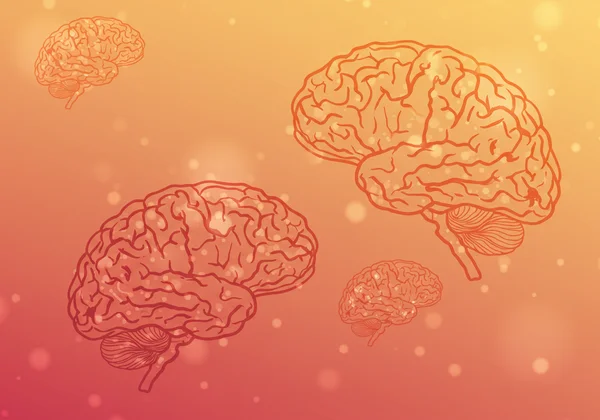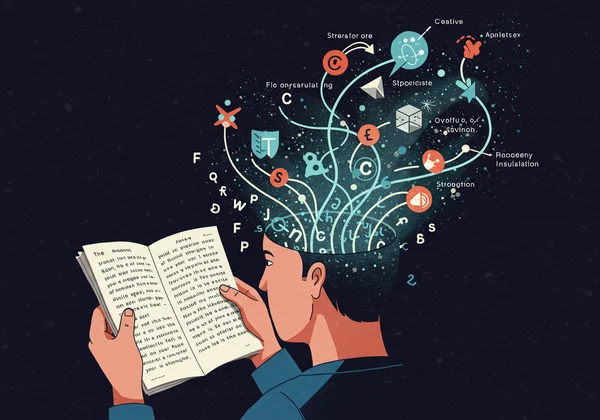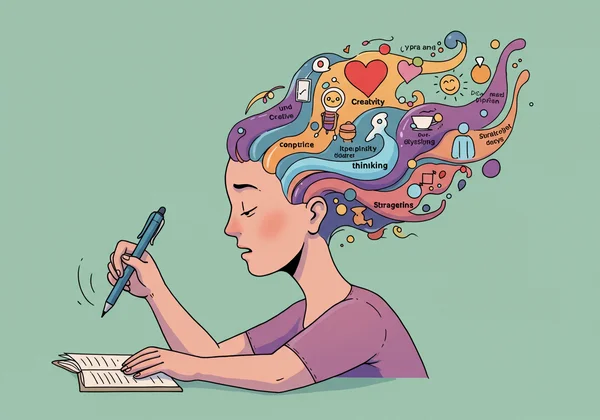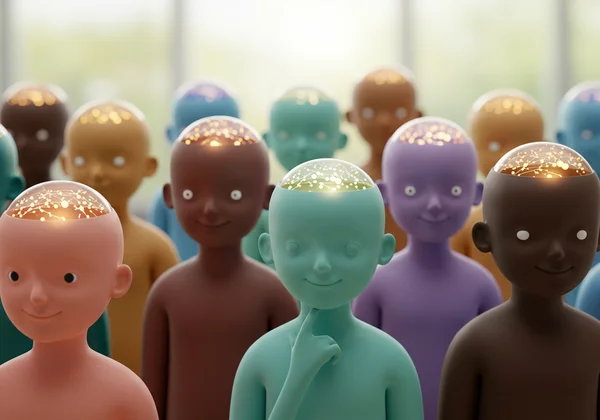Neurodivergent Test: Beyond ADHD & Autism – Types & Traits Explained
Have you ever felt like your brain is just wired differently? While conversations about neurodiversity often center on ADHD and autism, the spectrum of human cognition is far broader and more vibrant. What are the signs of being neurodivergent? This question opens a door to understanding a vast landscape of minds that perceive, process, and interact with the world in unique ways. If you're exploring this for yourself or a loved one, you're embracing a journey toward profound self-awareness. This article will guide you beyond the common examples, exploring other neurotypes like dyslexia, dyspraxia, and Tourette's Syndrome.
Understanding the full scope of human neurological variation can be validating and empowering. It helps reframe challenges into differences and highlights incredible, often overlooked, strengths. This exploration is a crucial step in discovering your own unique profile. A great starting point can be a comprehensive neurodivergent test designed to offer initial insights. Ready to begin? You can start your self-discovery with an empowering first step.
What Does "Neurodiversity" Truly Mean?
Think of "neurodiversity" as simply the natural variations in how our brains are wired. It's a big idea that helps us move away from seeing differences as problems and instead, embrace them. Instead of viewing conditions like ADHD or dyslexia as "disorders" that need to be "fixed," the neurodiversity paradigm sees them as natural differences in brain function, complete with their own sets of challenges and advantages.
This perspective is crucial because it fosters an inclusive environment. It acknowledges that there is no single "right" way for a brain to work. By celebrating these differences, we can better support individuals in harnessing their unique strengths while navigating any difficulties their neurotype might present. This approach is fundamental to building a more understanding and accommodating society.

Neurotypical vs. Neurodivergent: Understanding the Spectrum
To grasp neurodiversity, it's helpful to understand two key terms: neurotypical and neurodivergent. A neurotypical brain functions and processes information in ways that are considered standard or typical by society. In contrast, a neurodivergent brain functions differently. These cognitive differences are not a result of choice or character but are rooted in brain wiring.
It's vital to remember this is a spectrum, not a simple binary. Many people wonder if their experiences fit a specific label, often searching for a neurotypical vs neurodivergent test. The reality is that human neurology is complex, with countless variations. Neurodivergence encompasses a wide range of identified conditions, including autism, ADHD, dyslexia, dyspraxia, and many more.
Beyond the Basics: Why Broadening Our View Matters
Focusing only on autism and ADHD offers an incomplete picture of the neurodiversity spectrum. Millions of people are dyslexic, dyspraxic, or have other learning differences and neurotypes that significantly shape their lives. Broadening our understanding helps more individuals find a framework for their experiences, reducing feelings of isolation and confusion.
When we look beyond the basics, we acknowledge a wider range of human experiences. This inclusivity is vital for schools, workplaces, and families to create supportive environments for everyone. Recognizing the variety of neurotypes allows us to appreciate a richer tapestry of human talent and perspective, moving beyond a one-size-fits-all model of success.
Dyslexia: Reading the World Differently
Often misunderstood as simply reversing letters, dyslexia is a common language-based learning difference. A dyslexia neurodivergent profile involves challenges with decoding words, fluent reading, and spelling. It stems from differences in the brain's language processing centers, not from a lack of intelligence or effort.
For a dyslexic person, the printed word can feel like a complex code that is difficult to crack. This can affect academic performance and self-esteem if not properly supported. However, the dyslexic brain often compensates in remarkable ways, developing powerful alternative skills.

Common Dyslexia Traits and Unique Strengths
The challenges of dyslexia are well-documented, but its strengths are equally significant. Many dyslexic individuals excel in areas that require different kinds of thinking. Their brains are often wired for big-picture thinking and pattern recognition.
Common Traits:
- Difficulty with phonological awareness (connecting letters to sounds).
- Slow or inaccurate reading and spelling.
- Trouble with rhyming or remembering sequences.
Unique Strengths:
- Excellent 3D visualization and spatial reasoning.
- Strong creative thinking and problem-solving abilities.
- A knack for seeing connections that others miss.
Everyday Experiences of Living with Dyslexia
Living with dyslexia means developing unique strategies to navigate a world built for neurotypical readers. This might involve using text-to-speech technology, preferring audiobooks, or relying on visual aids. A dyslexic person may struggle with reading-heavy tasks at work or school, requiring extra time and energy.
These experiences highlight the importance of accommodation and understanding. Recognizing that these challenges are neurological, not a sign of laziness, is the first step. For those wondering if these experiences resonate, taking a neurodivergent traits quiz can be a helpful tool for initial exploration.
Dyspraxia: Coordination, Thought, and Creative Pathways
Dyspraxia, also known as Developmental Coordination Disorder (DCD), is a neurotype that primarily affects motor coordination. People with dyspraxia traits may appear clumsy or have difficulty with tasks requiring fine motor skills, such as writing, or gross motor skills, like balance and sports.
However, dyspraxia's impact extends beyond physical coordination. It can also affect planning, organization, and a person's sense of time and direction. These challenges with executive function mean that navigating multi-step processes can be mentally taxing for a dyspraxic individual.

Recognizing Dyspraxia Traits and Hidden Abilities
Recognizing dyspraxia is key to providing the right support. While the physical challenges are more obvious, the cognitive and emotional aspects are just as important. Dyspraxic individuals often have a deep well of creativity and empathy.
Common Traits:
- Poor balance, posture, and spatial awareness.
- Difficulty with fine motor tasks like tying shoelaces or using cutlery.
- Challenges with planning, organizing thoughts, and time management.
Hidden Abilities:
- Highly empathetic and intuitive.
- Determined, persistent, and great at developing alternative strategies.
- Strong long-term memory and creative thinking.
Navigating Life with Dyspraxia: Challenges & Solutions
Daily life with dyspraxia can feel like moving through a world that isn't designed for you. Simple tasks that others perform automatically may require intense concentration. This can lead to fatigue and anxiety, especially if one's struggles are met with misunderstanding.
Yet, dyspraxic people are often master problem-solvers, constantly finding new ways to adapt. Embracing tools like digital calendars, breaking down tasks into smaller steps, and focusing on strengths are effective strategies. If these challenges sound familiar, you can explore your traits to gain more clarity.
Tourette's Syndrome: Movement, Sound, and Expression
When people think of Tourette's Syndrome, they often picture involuntary swearing, but this is a rare and sensationalized stereotype. Tourette's is a complex neurotype characterized by "tics"—involuntary, repetitive movements and vocalizations. The nature of Tourette's neurodiversity is far more nuanced.
Tics can range from simple movements like eye-blinking or shoulder-shrugging to complex sequences of motion or sounds. They are often preceded by an uncomfortable premonitory urge, and suppressing them can be exhausting. Tourette's is frequently co-occurring with other neurotypes like ADHD and OCD.

Understanding Tourette's Beyond Tics: The Broader Picture
Living with Tourette's is about more than just managing tics. It involves navigating social stigma and misunderstanding. The energy required to suppress tics in certain environments can be immense, impacting focus and causing significant fatigue.
Understanding Tourette's means recognizing the person beyond the tics. It requires empathy and a willingness to look past stereotypes. Appreciating the internal experience—the urges, the effort of suppression, and the social anxiety—is key to offering genuine support.
Embracing a Neurodivergent Brain: Strengths in Tourette's
While Tourette's presents clear challenges, the brains of people with this neurotype can also possess unique advantages. The constant neurological activity can foster cognitive flexibility and resilience.
Research has suggested potential strengths including faster reflexes, enhanced cognitive control (developed through managing tics), and heightened creativity. By focusing on these strengths, individuals can build a positive identity that incorporates their neurodivergence as a part of who they are, not just a condition they have.
Other Faces of Neurodiversity: A Brief Overview
The spectrum of neurodivergence is vast, and many other types of neurodivergence exist. Understanding these helps create a more complete and inclusive picture of how human brains can vary. Each comes with its own profile of challenges and strengths.
Exploring Dyscalculia, Dysgraphia, and More
- Dyscalculia: Often described as "math dyslexia," this involves persistent difficulty with numbers. This can affect everything from telling time and handling money to understanding mathematical concepts.
- Dysgraphia: This is a neurotype that affects the physical act of writing and the expression of thoughts on paper. It can result in illegible handwriting, inconsistent spacing, and difficulty organizing written ideas.
- Hyperlexia: Characterized by an advanced and precocious ability to read, often far above what's expected for their age. However, this is often coupled with challenges in understanding spoken language and in social interaction.
Embracing Your Unique Brain: A Journey of Discovery
Neurodiversity is not a trend; it is a fundamental aspect of human variation. From dyslexia to dyspraxia and beyond, these neurotypes show that there are countless ways to experience and interact with the world. Embracing this spectrum helps us move from a deficit-based model to one that celebrates differences and harnesses unique strengths.
This journey of understanding yourself or others is deeply personal and incredibly rewarding. It can bring clarity to lifelong questions and foster a powerful sense of self-acceptance. If you are ready to explore your own neurological profile, the first step is often the most important.
Take our free and insightful neurodivergence test on our platform. It's a quick, accessible tool designed to empower you with knowledge and start you on a path to a richer life and deeper self-understanding. Take the Neurodivergent Test now and embrace your unique mind.

Disclaimer: The test on this website is intended as a preliminary screening tool for self-exploration. It is not a clinical diagnosis. For a formal diagnosis, please consult a qualified healthcare professional.
FAQ Section
What are the signs of being neurodivergent?
Signs of being neurodivergent are incredibly varied but often include patterns of thinking, learning, and socializing that differ from the majority. This can manifest as intense focus on specific interests (hyperfocus), unique sensory experiences (being over- or under-sensitive to light, sound, or touch), challenges with executive functions like planning and organization, or distinct approaches to social interaction.
How do you get tested for neurodivergence?
A formal diagnosis for a specific neurotype like autism or dyslexia requires an evaluation by a qualified professional, such as a psychologist or neuropsychologist. However, for initial self-discovery, many people start with an online neurodivergent screening. These tools can provide valuable insights and help you decide if pursuing a formal assessment is the right next step for you. You can try our free screening tool to begin.
Can you be neurodivergent and not have ADHD or autism?
Absolutely. This is a key aspect of understanding the broader neurodiversity spectrum. As this article highlights, neurodivergence includes many other conditions like dyslexia, dyspraxia, Tourette's Syndrome, dyscalculia, and more. Each has its own distinct profile of traits, challenges, and strengths.
What are the strengths of a neurodivergent brain?
The strengths of a neurodivergent brain are diverse and powerful. They often include exceptional creativity, strong pattern recognition, intense focus (hyperfocus), innovative problem-solving, high levels of empathy, and the ability to see the world from a unique and valuable perspective. Embracing neurodiversity means recognizing and celebrating these incredible assets.